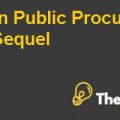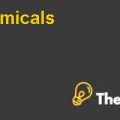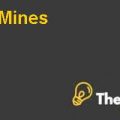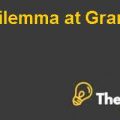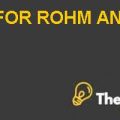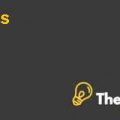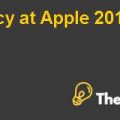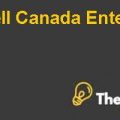
Diageo plc
Background
In 1997, Grand Metropolitan plc and Guinness plc merged together to form the world’s leading consumer product company, which was named as Diageo plc. It was the seventh largest food and beverage company in the world. Later on, the firm diversified its operations in spirits and wine, packed foods, beer and restaurant division.
The company is now intending to concentrate solely on beverage alcohol industry, so the organization took the decision to divest its shareholding in packed food and restaurant division. This strategy will raise additional funds for the company to invest in the distribution channel of wine and beer division, which will result in a cost saving of approximately £130 million annually.
Problem statement
The management considers the impact of potential divestment on the capital structure of the company, which will have a significant impact on the credit rating of the firm. Further, the management also considers the impact of potential divestment on the revenue and operating profits.
Report Analysis
The report covers the following analysis
a) Evaluation and comparison of capital structure policies
b) Pillsbury and Burger King
c) Diageo capital structure
Evaluation and comparison of capital structure policies
Credit ratings have a significant impact on the borrowing capability of the company. High credit ratings will attract debt holders; whereas low credit ratings will discourage them. Before the merger of both the companies, Guinness and Grand Metropolitan had a credit rating of AA and A respectively, the trend also continued in future and Diageo plc reported a credit rating of A+ after its merger.
The credit rating of Diageo plc depends on interest coverage ratio and EBITDA per total debts. Although the policy adopted by the company makes sense but adopting a market based approach can facilitate better results. Diageo plc has a diversified portfolio in different segments, so the average of different segments can facilitate better comparison. The results of Appendices 1 shows that, the average of different segments reveals interest coverage of 9.67 times whereas the interest coverage of Diageo plc is only 5 times, which is substantially lower than the average of different segments. Low interest coverage will increase complexity for the company to raise further funds.
The EBITDA per total debts of the average segments represents 69% whereas the results of the Diageo plc represent 34%. Although the figure is within the target of 30% to 35% but a reduction in figure can threaten the credit rating of the firm significantly and increases chance for the company to raise debt finance at a relatively higher rate.
Diageo plc is considering the idea to focus on beverage alcohol industry, so it will be more beneficial to compare the results of Diageo plc with its major competitors in the industry rather than considering the average of long range of different segments. The average interest coverage of alcohol and beer industry represents 9.025 times whereas; the interest coverage of Diageo plc represents 5 times. Further, average EBITDA/total debts of alcohol and beer industry represent 62% whereas the result of Diageo plc is low which represents 34%. If Diageo plc wants to make strong position in market and intends to attract its debt holder for offering them low interest rate; then the company must consider restructuring its capital structure.
Pillsbury and Burger King
Alcohol and beer are the growing segments of Diageo plc, so the strategic view behind the sale of Pillsbury and Burger King is to focus exclusively on alcohol beverage industry. Further, the funds generated from the exit strategy can be used to develop new brands and to align the distribution channel of both segments. Adopting this strategy will result in cost saving for the company and will help the organization to achieve economies of scale.
The results in Appendices 3 show that, spirits and wine is the major segment of Diageo plc which represents 41.88% contribution in to the total group’s revenue and a contribution of 50.61% in the total operating profit. The second major division of the company is packed foods, which contribute 32.11% in the total group revenue and a contribution of 24.85% in the total operating profit. Packed food represents a substantial portion of the group’s results, so the management should be confident enough that results of potential synergies will show better results than fast food segment.
The beer segment represents 18.08% of the total group’s revenue whereas its contribution to the total operating profit represents 14.34%. Although, beer segment is much smaller in size than packed foods but it has the potential to grow instantly. Further, the alcohol and wine segment can be aligned in order to achieve synergies and reduce cost. The restaurant segment contributes 7.93% in the total revenue and 10.2% in the total operating profit. The management’s view to divest the shareholding in restaurant segment is justifiable because it contributes low revenue and profit to the overall results of the company.
Diageo capital structure
The motive of the formulation of stimulation model is to determine an optimal point which will balance the effect of tax and distress cost, so as to minimize the cost to shareholders and increase funds for its distribution to shareholders. 4.2 is the point which shows the optimal results but it will result in a median interest coverage of 4.94 times, it is lower than the targeted interest coverage of 5 to 8 times, which will be a bit riskier for the company and company’s credit rating will fall from A+ to BBB. It will significantly threaten the shareholders confidence and will increase the possibility for the company to raise finance at higher rates.
Many factors have been considered to measure the cost of financial distress, which includes competitor’s advantage of situation, customer willingness of purchase and management’s focus on financial crises. Further, the model has also considered the effect of tax shield each year, operating cash flows, ROA, exchange rate fluctuations, profitability of different segments, future distribution of profitability, etc. but the organization fails to consider liquidity preferences,...........................
This is just a sample partial case solution. Please place the order on the website to order your own originally done case solution.

